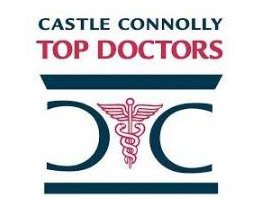Between the vertebrae in the spinal column are intervertebral discs that act like shock absorbers. They consist of a disc (like a cushion filled with nucleus pulposus, which has the consistency of jelly) and ligaments to surround and anchor it in place.
What you should know about disc disorders
- There are many types of disc disorders.
- Disc disorders do not always cause pain.
- Disc disorders can occur in anyone at any time, but they are more common in older people.
- A disc disorder can be caused by an injury or accident, but it may also happen over time due to degeneration (“wear and tear”).
Some main types of disc disorders
For a physician, a disc disorder is any problem with the disc(s) between the vertebrae. The main types of disc disorders are:
- Herniated or ruptured disc
- Degenerative disc disease
- Thinning disc
- Bulging disc
Herniated or ruptured disc
A herniated or ruptured disc is a “noncontained” disc disorder because the disc has partly or completely broken open and the nucleus pulposus is no longer contained in the disc. When the nucleus pulposus leaks out, two things happen:
- This jelly-like substance can spread out and put pressure on the spinal cord or nerves.
- The disc loses some of its ability to be a shock absorber.
Sometimes people call a herniated or ruptured disc a “slipped disc,” but the disc does not literally slip. It breaks open.
Degenerative disc disease and thinning discs
Degenerative disc disease occurs when the disc starts to wear out. The disc may shrink, lose its shape, lose its flexibility, wear out or get very thin. Degenerative disc disease (DDD) is technically not a disease at all, but would be called a “condition” by medical experts.
Disc degeneration is a natural part of aging, and it is more common in older people. Whether or not disc degeneration produces symptoms and how severe those symptoms are can vary among individuals.
DDD is the general term for all disorders involving the progressive degeneration of the disc. Thinning discs are a particularly common form of DDD. DDD is considered a “contained” disc disorder because the nucleus pulposus does not leak out.
Bulging disc
A bulging disc is a “contained” disc disorder because the disc has not yet broken open. However, a bulging disc is likely to rupture. The bulge in a herniated disc may extend in any location and may press on a nerve or cause pain. However, some people with bulging discs have no symptoms.
Diagnosing disc disorders
University Spine Center specializes in diagnosis of disc disorders. Disc disorders can be challenging to diagnose because the symptoms of disc disorders can vary with patients and do not necessarily match the severity of the condition. A person with a severe problem may have mild symptoms and, vice versa, a person with a mild problem may have severe symptoms.
Typical symptoms of disc disorders include:
- Back pain
- Leg pain
- A sense of numbness, tingling or “pins and needles”
- Incontinence
- Leg weakness






